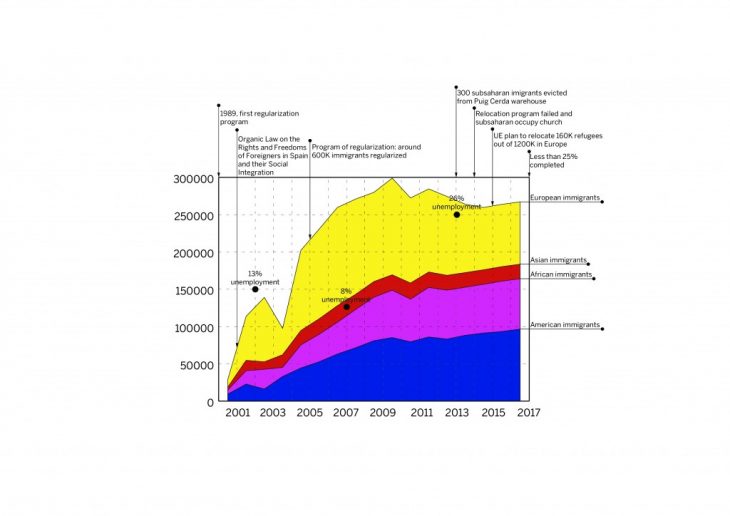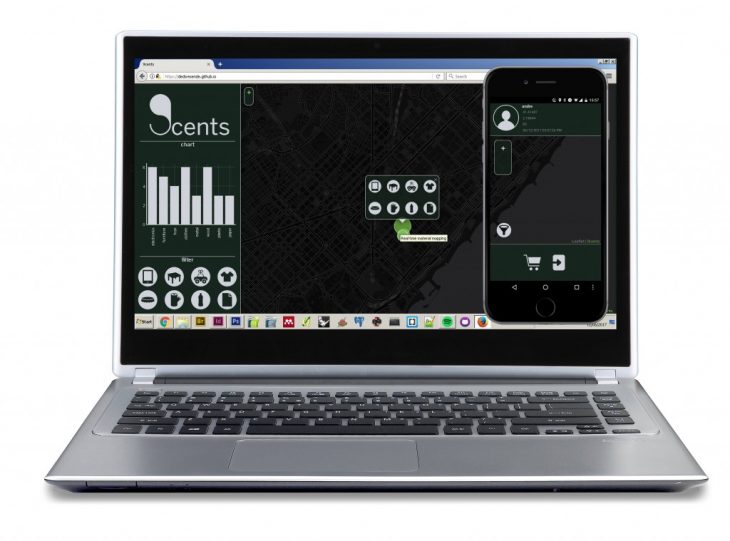
The immigrant population in Barcelona today turns around 17% according to official data. This population continues to grow even after the crisis of 2008 and the government of the Catalan capital is open to some initiatives so that there is a better insertion of these immigrants in the society of this City.

Typing the words “immigrants” and “barcelona” in Google is not difficult to understand that the immigrant population is often related to urban conflicts and paying attention to the headlines we can see another factor linking urban conflicts, immigrants and Barcelona: the informal economy.
But this shouldn’t be a surprise especially in Spain once this is one of the countries which the biggest company in revenue is called “Black Market”.

To understand this phenomenon we must resort to David Harvey’s city concept in Rebel Cities of 2012:
“From their very inception, cities have arisen
through the geographical and social
concentration of surplus product”
Understanding the processes of urbanization as promising investments and that these should return profit to its investors we can see that non-surprisingly the citizen is a mere consumer of the product “city” and If so he can not afford such consumption is often put away from the other manifestations of it.

NO OLYPMIC FOR RIO’S FAVELAS. Photograph by Reuters/Ricardo Moraes. Retrieved from
A weapon commonly used to segregate one who is not a potential consumer is the overplanning that generates bureaucracies and loopholes for real estate speculation. But as it is very well put by Ananya Roy em 2005 it is exactly in the cracks of the planning that new manifestations of citizenship appear.
“The idea of informality as an epistemological
device to reveal some of the limitations of
conventional planning policy and practice, and
to provide the conceptual starting point for a
new way of understanding and intervening in
urban spaces.”
Let’s take a look at the waste management map system of Barcelona:

From the phase of disposal to be discarded that can be placed in selective containers, or taken to movable or fixed points called “Green Points” until the final phase of the material being recycled or deposited in landfills or composting systems ( In the case of the organic) we can see how comprehensive and complex the system is that it collects an average of 7.5% of rates in the household water bill.

But still, there are several people divided into 3 large communities that survive through the collection and sale of valuable materials from the rubbish of Barcelona.

These three communities are generally characterized by the origin of the immigrant being the Senegalese and Gambian ones, the Moroccans another and the gypsies the third and differentiate themselves by the way they practice this urban mining until the final destination of their products. And, through a survey in the field, it is possible to understand how active all of them are in the Poblenou neighborhood, especially around Pere IV street.

But there is one thing in common in the three communities as well as in the larger part of the whole population of the informal economy: most of the time they prefer to keep this activity confidential.
So how do I map something would rather not be mapped?
One possible answer to this question arises when we think of the cycle of material about to be discarded. What is often done with it just before discarding?
It is advertised in second-hand markets.

For an attempt to trace patterns of waste pickers activity or “scrapers” as they are called in Barcelona the on-site survey was crossed with three groups of data and through mapping tools and linear regressions can be found indicators for this activity.
The first group consists of demographic parameters provided mainly by the data portal of the city administration, in the example below, we have the crossing of the presence of the scrapers with one of the factors that notice a remarkably strong correlation, the presence of population over 65 years old and/or retired.

The second group of data is the physical characterization of the city in the surroundings where the activity has a strong presence. This time it is highlighted the relationship between the activity of scrap dealers and the presence of free wifi points made available by the city administration.

And finally the cross between the intensity of the presence of waste pickers and the activity of selling online through platforms such as Wallapop and Vibbo. In the map below we see the intensity of the presence of the “chatarreros” in contrast to the intensity of the presence of electronic articles.

With the crossing of data, it is possible to see an important relation between the urban waste mining and activities that use the internet as a tool.
Thus being materiality of the city next to the exchange of data, together with the presence of activities that overflow the mainstream economy can be translated into two words: make spaces.

Analyzing within this panorama then we have the current situation where basically the scrap collectors collect materials by the streets around the street of Pere IV. And they take valuable items to warehouses around Puig Cerdá Street where they try to refurbish objects, often live and use as a community base.

But changing the mindset to the “makers” mindset we see that the city feeds maker spaces with data.

Which will become objects for potential consumers/producers…
These objects at the end of their time of use by the users will become sources of data for the own makers, consumers and mainly for the scrapers.

All of these agents then connect through an online platform that maps materials transported around the city and connects all actors to an optimal flow of these materials.


This is 9cents.
9cents is the price of the pound of scrap in some places of the city of Barcelona. But it is also a social network that aims to connect people by the materiality of the city. It is business platform to help waste pickers to be in touch with possible clients for their material and it is also a tool for city planners to understand better the metabolism of the city.
Access 9cents at:
https://dedsresende.github.io/
And download 9cents app at Google Play.

9cents is a project of IaaC, Institute for Advanced Architecture of Catalonia
developed at MAA02 in 2016/2017 by:
Students: André Resende
Faculty: Vicente Guallard
